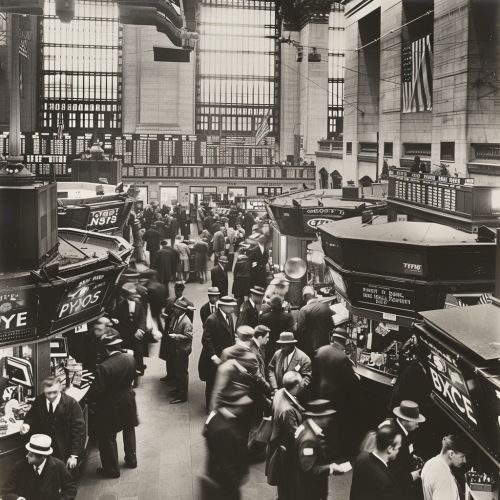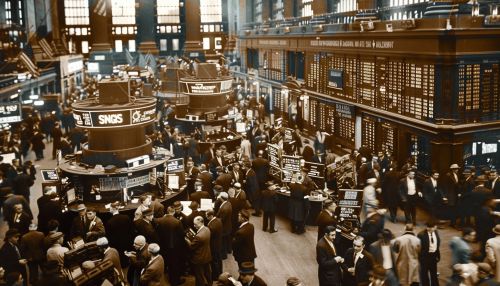Stock Market Crash of 1929
Background
The Stock Market Crash of 1929 was a significant event in the history of the United States, marking the beginning of the Great Depression. This period of economic downturn lasted for a decade and had far-reaching effects on the global economy. The stock market crash was characterized by a rapid and uncontrolled decline in stock prices, leading to widespread panic and financial ruin for many investors.
Causes
The causes of the 1929 stock market crash are complex and multifaceted. In the years leading up to the crash, the U.S. economy experienced a period of rapid growth and expansion, known as the Roaring Twenties. This was a time of significant economic growth, technological innovation, and increased consumer spending. However, this period of prosperity was underpinned by a speculative bubble in the stock market.


The Federal Reserve played a significant role in the lead-up to the crash. In an attempt to curb the stock market speculation, the Federal Reserve raised interest rates several times in 1928 and 1929. This made it more expensive to borrow money, leading to a decrease in investment and spending. As a result, many businesses and individuals were unable to repay their loans, leading to a wave of bank failures.
Another major factor contributing to the crash was the widespread practice of buying stocks on margin. This involves borrowing money to buy more stocks, with the expectation that the stocks will increase in value. However, when the stock prices started to fall, many investors were unable to repay their loans, leading to further panic and selling.
The Crash
The stock market crash began on October 24, 1929, a day known as Black Thursday. On this day, the stock market lost 11% of its value at the opening bell, causing a rush to sell. Despite efforts by major banks and investment companies to stabilize the market by buying up large blocks of stock, the panic continued.
The following week, on October 28, the stock market experienced another massive drop, known as Black Monday. This was followed by Black Tuesday, on October 29, when the market lost over 12% of its value. By the end of the week, the stock market had lost $30 billion in value, marking the end of the Roaring Twenties and the beginning of the Great Depression.
Aftermath
The aftermath of the 1929 stock market crash was devastating. Many investors lost their life savings, and thousands of banks failed. Unemployment rates skyrocketed, reaching as high as 25% in the United States. The crash also had a significant impact on the global economy, as international trade plummeted by more than 50%.
The crash led to significant changes in U.S. financial regulations. In response to the crash, the U.S. government introduced a series of measures to restore confidence in the economy. These included the establishment of the Securities and Exchange Commission (SEC) to regulate the stock market and prevent fraudulent practices.
Legacy
The Stock Market Crash of 1929 is often cited as the most devastating crash in the history of the stock market. It served as a harsh lesson on the dangers of speculation and unregulated markets. The crash and the subsequent Great Depression had a profound impact on the United States and the world, leading to significant changes in economic policy and financial regulation.
